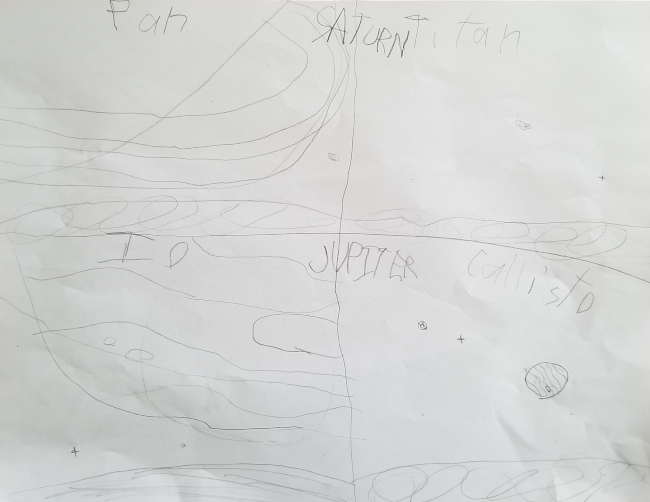
- Top-left: This is what the view of Saturn would look like from Pan. The small object on the right-hand side of the frame is Aegaeon.
- Top-right: This is approximately what Saturn would look like from the surface of Titan. The sun can be seen on the right-hand side.
- Bottom-left: This is a view from Io. Europa can be seen very close to Jupiter, while the sun can be seen on the left-hand side.
- Bottom-right: Here is an approximate view from Callisto. Ganymede can be seen on the left, the sun in the center, and Europa on the right.
My son has been studying outer space and our solar system for at least three years now; he's seven years old at present: so he can visualize roughly where everything is off the top of his head, right down to the myriad dwarf planets and other more obscure objects, like the largest asteroids.
One of his other visualization expertises relates to numbers: following scientific notation, he's memorized the exact named order of all the numbers up to a millillion, also called millinillion-- which is 10^3003. He's explained to me that it just follows conventions, like the lower numbers we all know.
The one challenging part is that it's difficult for him to check his work. For instance, I asked him a random one: "what's the name for 10^205?", and after a few minutes of deliberation, he came up with "quattorquinagintillion"-- although it's much easier to count in sequence than to fly right to ones in the middle.
I told him he should write a Python program to convert numbers of zeroes to their named equivalents. If he makes one, I'll post the code here.